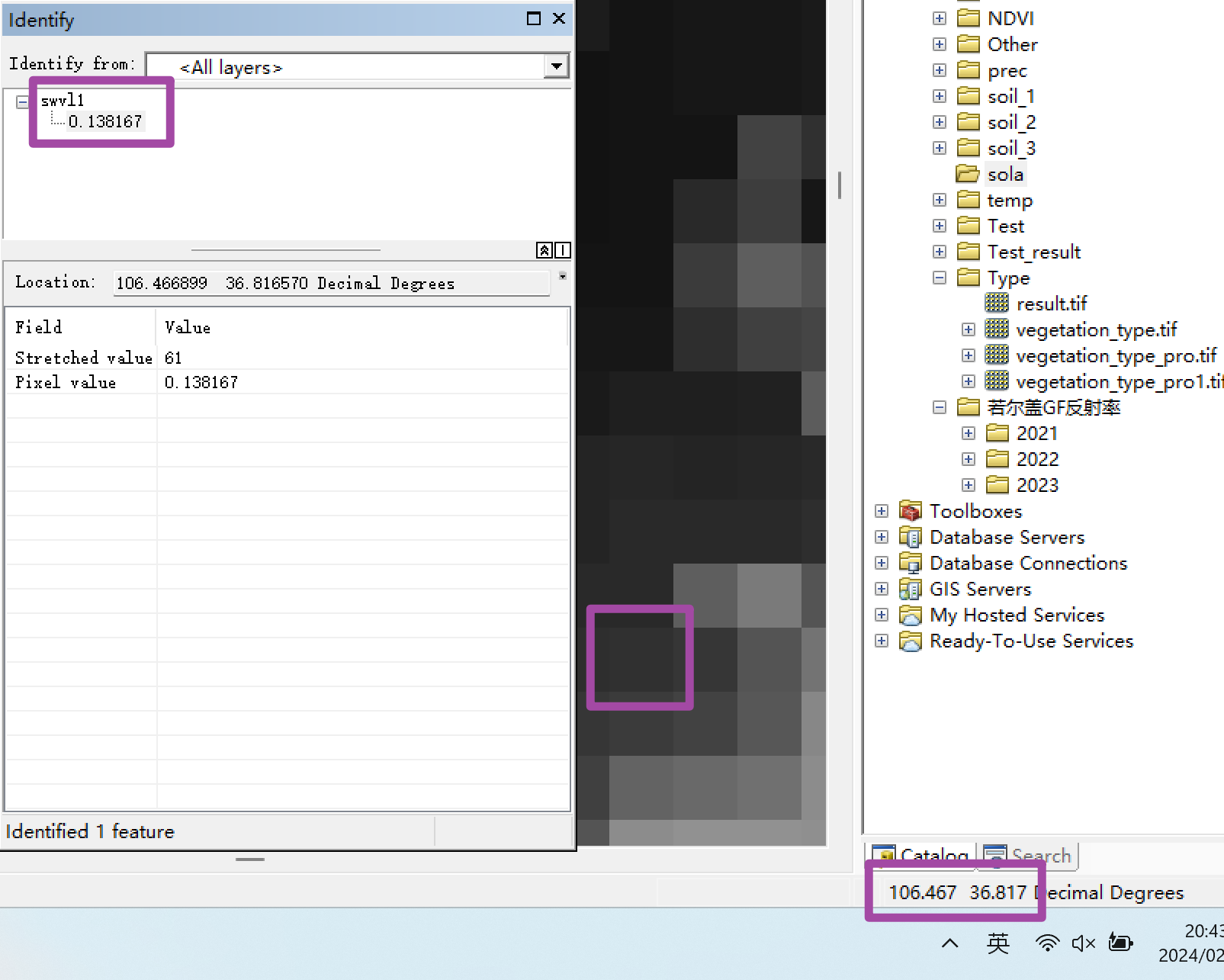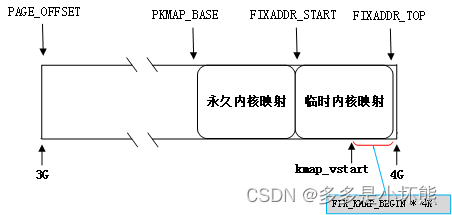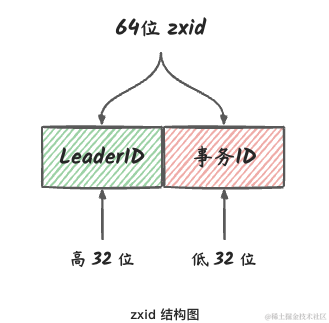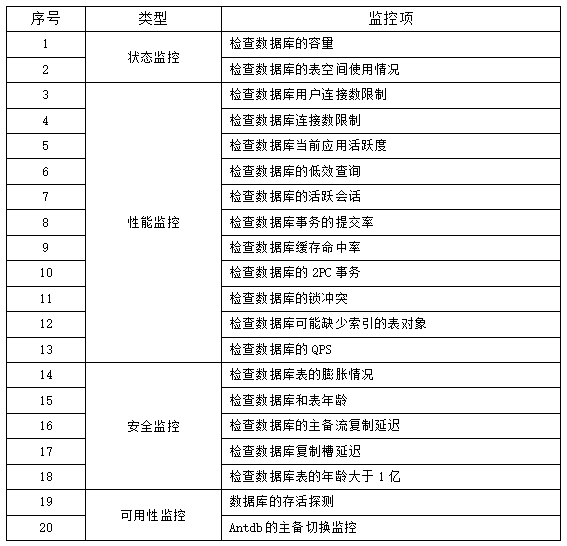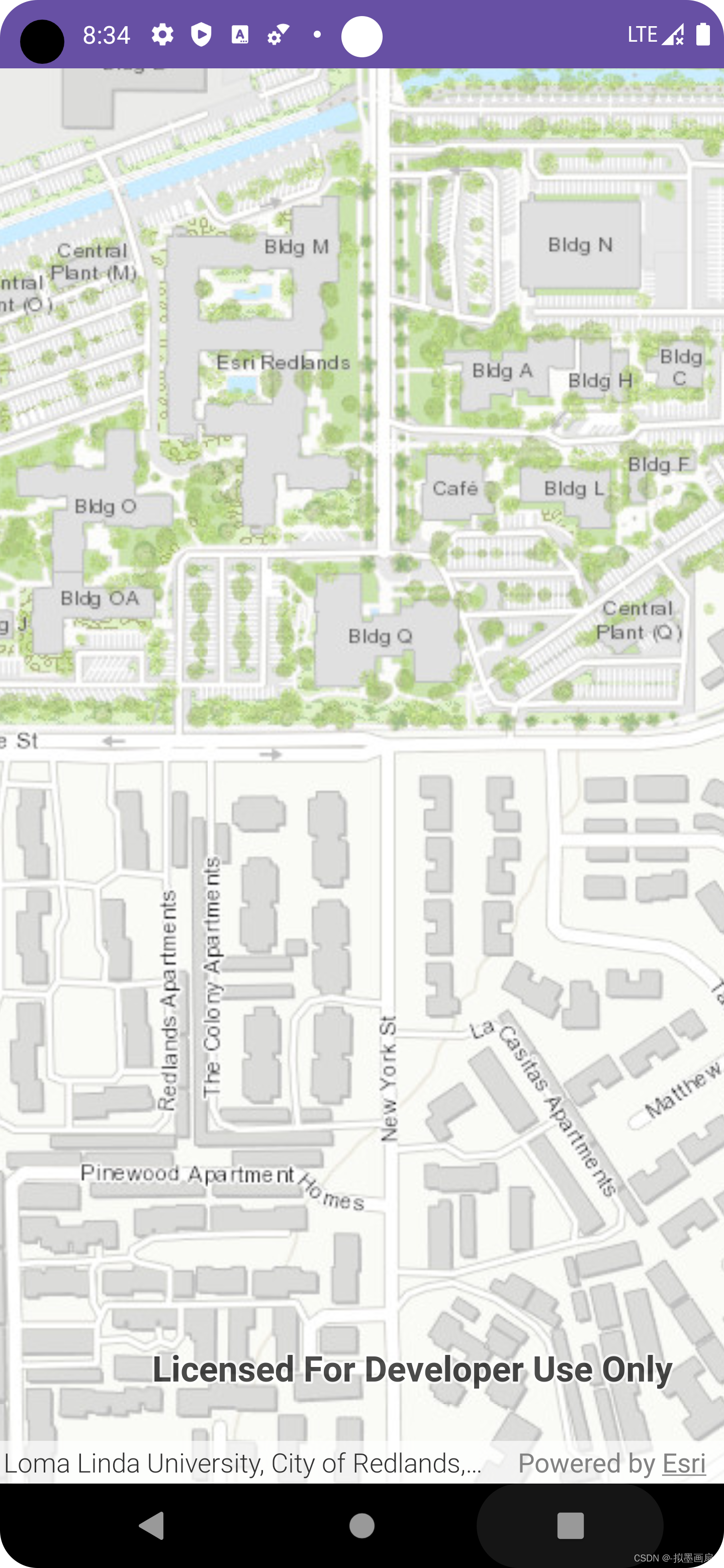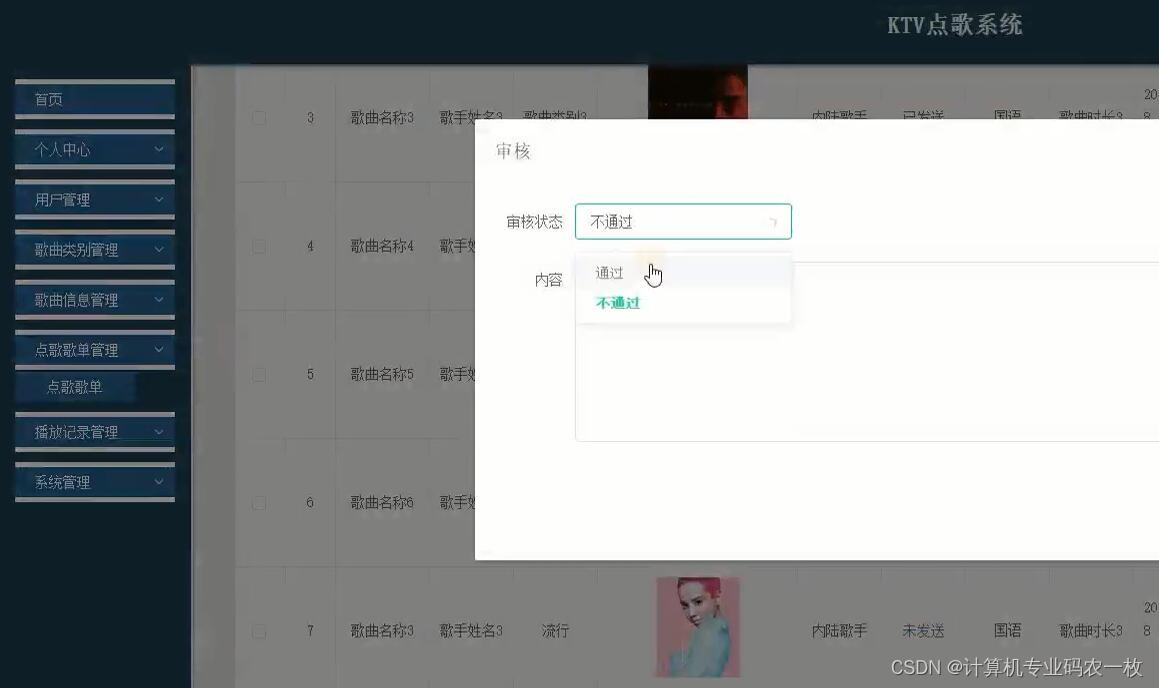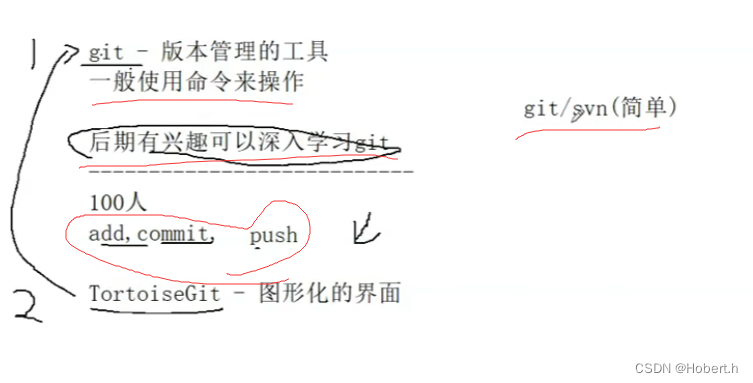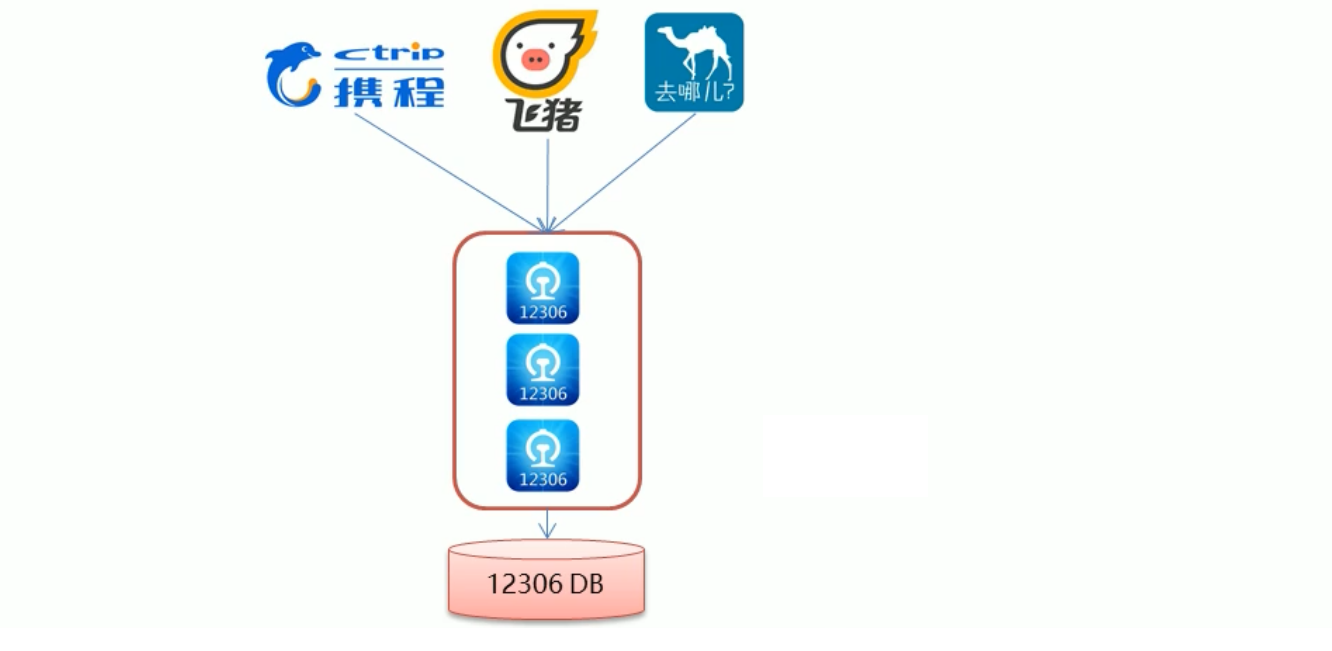目录
1 基础知识
1.1 先序遍历
1.2 中序遍历
1.3 后序遍历
2 94. 二叉树的中序遍历
3 104. 二叉树的最大深度
4 226. 翻转二叉树
5 101. 对称二叉树
菜鸟做题,语言是 C++
1 基础知识
二叉树常见的遍历方式有:
- 先序遍历
- 中序遍历
- 后序遍历
- 深度优先遍历 = 先序遍历
- 广度优先遍历 = 层次遍历(后面有道题)
其实稍微观察一下就可以发现,“先序”、“中序”、“后序” 针对的是根节点的位置。即在 (根节点,左子树,右子树) 这个三元组中,根节点处于哪个位置。
1.1 先序遍历
- 根节点
- 根节点的左子树
- 根节点的右子树
vector<int> ans;
void preorder(TreeNode* root) {
if (!root) return;
ans.push_back(root->val);
preorder(root->left);
preorder(root->right);
}这个例子包括后面的两个例子,都是按照指定顺序遍历二叉树,同时将每个节点的值放入到容器 ans 中。
1.2 中序遍历
- 根节点的左子树
- 根节点
- 根节点的右子树
vector<int> ans;
void inorder(TreeNode* root) {
if (!root) return;
inorder(root->left);
ans.push_back(root->val);
inorder(root->right);
}1.3 后序遍历
- 根节点的左子树
- 根节点的右子树
- 根节点
vector<int> ans;
void postorder(TreeNode* root) {
if (!root) return;
postorder(root->left);
postorder(root->right);
ans.push_back(root->val);
}2 94. 二叉树的中序遍历
属于中序遍历(显然)
通过第 1 节的介绍,想必解决这个问题就很容易了。需要注意的是,我们的递归可以不需要返回值,因此需要额外写一个返回值为 void 的函数(但貌似你每次都返回一个 vector<int> 也行得通)
class Solution {
public:
void inorder(TreeNode* root, vector<int>& ans) {
if (!root) return;
inorder(root->left, ans);
ans.push_back(root->val);
inorder(root->right, ans);
}
vector<int> inorderTraversal(TreeNode* root) {
vector<int> ans;
inorder(root, ans);
return ans;
}
};3 104. 二叉树的最大深度
属于后序遍历:先获得左右子树的最大深度,再获得本子树的最大深度
class Solution {
public:
int maxDepth(TreeNode* root) {
if (!root) return 0;
int leftMaxDepth = maxDepth(root->left);
int rightMaxDepth = maxDepth(root->right);
return 1 + max(leftMaxDepth, rightMaxDepth);
}
};精简版:
class Solution {
public:
int maxDepth(TreeNode* root) {
if (!root) return 0;
return 1 + max(maxDepth(root->left), maxDepth(root->right));
}
};4 226. 翻转二叉树
属于先序遍历
解题思路:
- 完成当前节点的翻转
- 完成其左右子树的翻转
class Solution {
public:
TreeNode* invertTree(TreeNode* root) {
if (!root) return nullptr;
TreeNode * temp = root->right;
root->right = root->left;
root->left = temp;
invertTree(root->left);
invertTree(root->right);
return root;
}
};这道题就没有单独写一个返回值为 void 的函数,虽然递归期间的返回值都没有派上用场,但是最重要的是最后一个返回值,它返回的是整棵二叉树的根节点,符合本题对返回值的要求。
5 101. 对称二叉树
属于先序遍历;少有的参数需要传两个指针的题
解题思路:
- 判断左右对称位置上的两个节点是否都存在
- 判断这两个节点的值是否相等
- 判断这两个节点的左右子树是否对称
思路说明图:
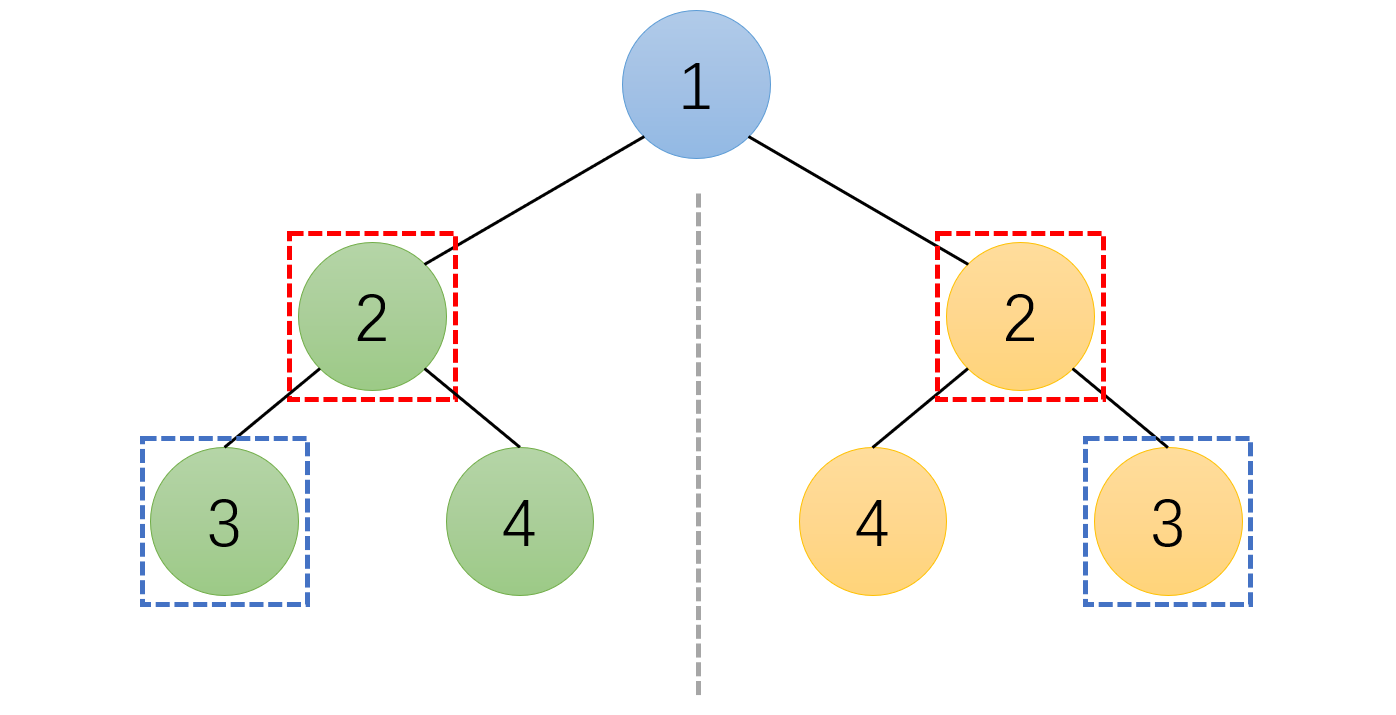
- 对称位置上的两个节点进行比较,即左侧的 “2” 和右侧的 “2”
- 左侧的 “2” 的左子树和右侧的 “2” 的右子树进行比较
- 左侧的 “2” 的右子树和右侧的 “2” 的左子树进行比较
class Solution {
public:
bool check(TreeNode * p, TreeNode * q) {
if (!p && !q) return true;
if (!p || !q) return false;
return p->val == q->val &&
check(p->left, q->right) && check(p->right, q->left);
}
bool isSymmetric(TreeNode* root) {
return check(root->left, root->right);
}
};说明:
if (!p && !q) return true;
if (!p || !q) return false;第一行判断是指,当 p 和 q 都为空指针时,属于是对称的情况;第二行判断是指,当 p 和 q 中只有一方为空指针时,属于是非对称的情况。

